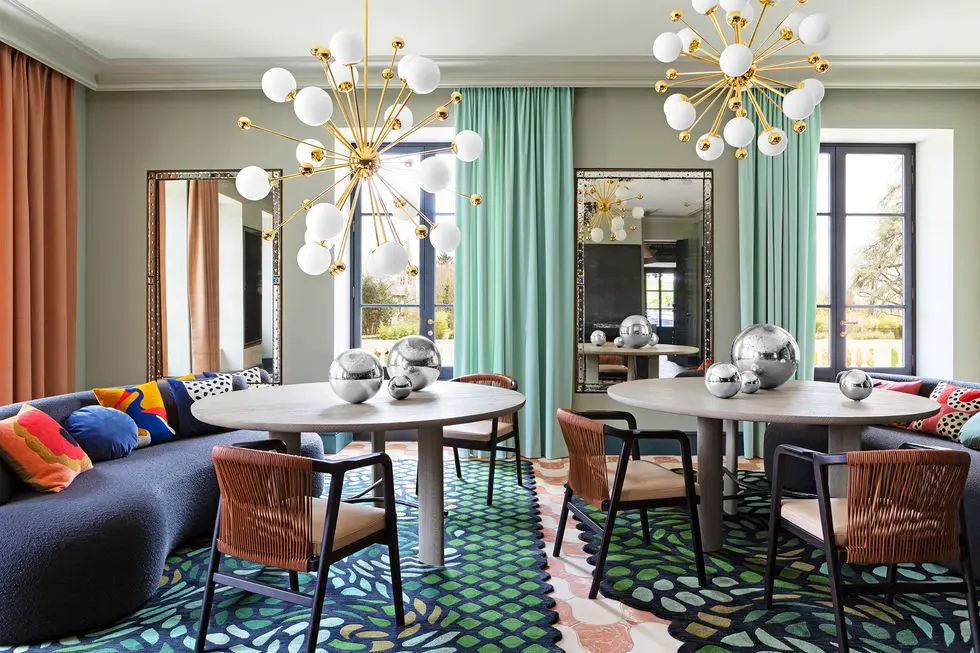Curtains can transform the feel and look of a space. The many options can be confusing, especially when it comes to deciding on the right size, material, style, where and how to hang them and hardware.
This detailed guide covers all of these factors, and more, to simplify your selection process.
Curtain Style Considerations
Your living room will likely be the room most frequently seen in your house. Therefore, choosing curtains that are both functional and attractive is important. To get started, consider the following factors:
- Are the curtains purely decorative or functional?
- You have a lot of windows, but you’re on a budget.
- There’s a large window in the room that is the center of attention and well worth the extra money.
- Are you looking for light-filtering panels that will keep your room bright and spacious?
- Are you a movie lover and want blackout curtains for your living room?
Your options will be narrowed down by answering these questions. The fabric does not affect the amount of light that the curtains let in if they are only decorative. Your choice will be purely aesthetic, whether you choose a natural-looking linen or a heavy velvet. When light and brightness is important, choosing the right fabric becomes a major consideration.
If you have multiple windows in your living room, it is important to create a uniform look. To achieve this, use identical curtains and rods, and hang them at the exact same height.
The curtains don’t only regulate the light, they can also add color and pattern, accent windows with architectural details, and create an ambiance that is cozier.
Curtains come in two different types.
- Custom window treatments: These are window treatments that are custom made to fit a specific size. This option is expensive but fits perfectly.
- Ready-made window treatment: These curtains are available in five standard sizes: 63-inches, 84-inches, 95-inches, 108-inches, and 120-inches.
How To Choose The Length Of Curtains
The length of curtains is a major factor to consider. The length of curtains is important. If they are too short, the whole room will look thrown off and the ceiling height will be visually reduced. They’ll look messy if they’re too long. This is why it’s a good idea to measure your window height and ceiling height.
Position your curtain rod over the window, and measure the distance from the top of it to the ground. If the curtain measurement is one inch short of the standard length, adjust the rod slightly.
You’ll also need to measure the width of the window in order to determine whether two curtain panels are needed on each side or if one is sufficient. Standard curtain panels are 54 inches wide. You will need to add at least one foot to either side of the windows to ensure that the curtain rods and curtains frame the window without blocking out too much light.
Length styles
There are three different lengths to choose from when it comes to the curtain’s floor-to-floor style:
Hover
The curtains will hover at the same height as the floor. It is the most popular way to hang floor length curtains because it looks elegant and allows for easy opening and closing.
Break
Designers call curtain panels with a 1-inch break. This means that your curtains will need to be longer by one inch. This looks has a designer look, but doesn’t seem stuffy or formal.
Puddle
Consider a puddle for a softer, more romantic and relaxed feel. The “puddle” is created by a fabric that covers the floor up to 6 inches. A puddle creates a cozy feeling when used with softer, thinner fabrics. However, bolder, stiffer colors and curtains add drama and sophistication.
Choose the Curtain Fabrics
Curtains come in a variety of fabrics, from velvety to linen. Consider two factors when choosing the fabric: the desired look and the purpose of the curtains. If you want to darken a room for summer movie nights or keep out bright morning light, then sheers will not be the right choice.
Room Darkening Curtains
Velvet is a great choice if you want to keep the morning light out of your room and regulate temperature. Blackout curtains are a great choice for window treatments that completely block out light. They’re lined with a material to keep the sun away.
Light Filtering curtains
Choose lighter, thinner fabrics, such as polyester sheers or cotton sheers, for curtains that let in a lot of natural light. Lace curtains can be used as a light filtering window treatment for small windows.
Choose the Hardware
Pick your curtain rod if you haven’t done so already. A curtain rod is not just for practical purposes; it can also add visual interest to your windows.
The length of curtain rods can be adjusted. To determine the length of rod you will need, measure your window’s width and add one foot either side. This will allow enough room for the curtains to hang.
Curtain rods are available in a variety of styles and materials. They can be single or double, if you’re looking to use sheers with thicker panels. There are many materials available, including wood, brass, iron and brushed nickel. Finials, the caps at either end of a rod, help to define its style. They come in ornate and traditional designs, as well as sleek and streamlined modern ones.
The Layer Window Treatments
There’s no reason why you can’t also hang curtains if your windows have other window treatments, such as Roman shades and bamboo wood blinds. This will add visual interest and depth by adding depth and dimension.
Pair white linen or cotton curtains with wooden blinds for a classic, light and airy look. Keep the color, texture, and pattern simple when layering two window treatments. This will prevent the windows looking too busy.

